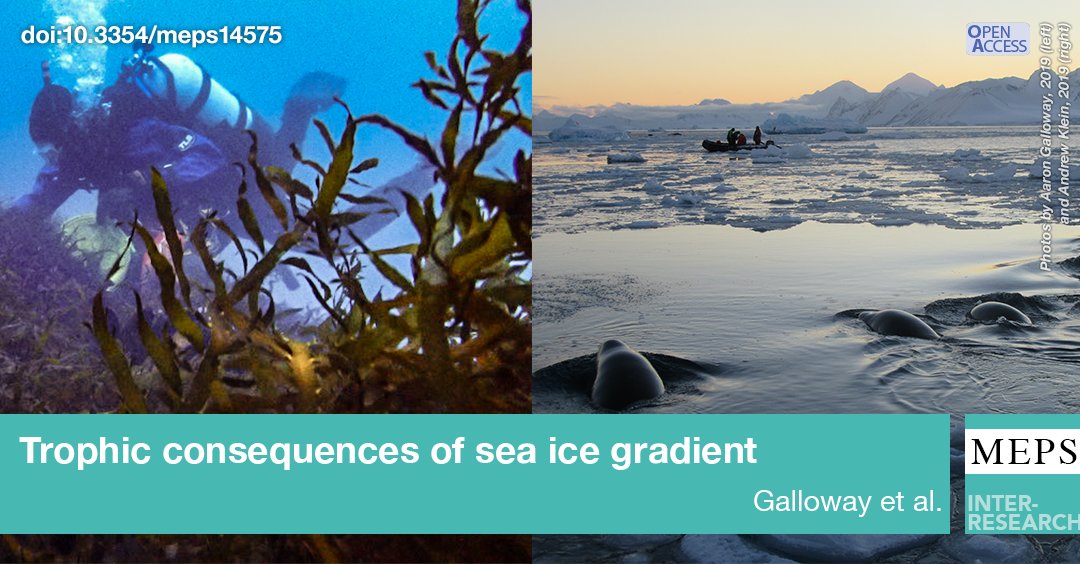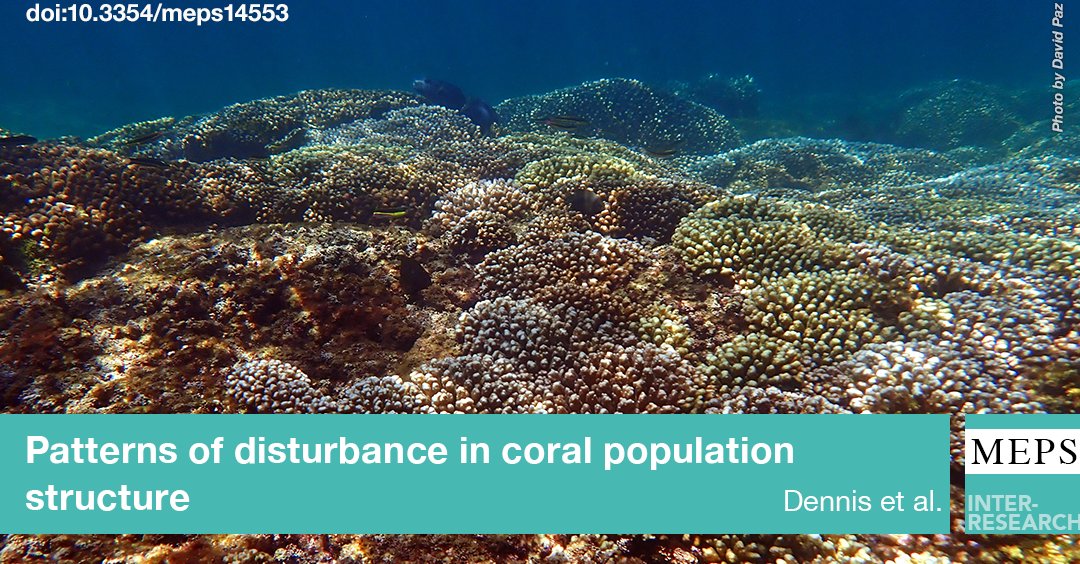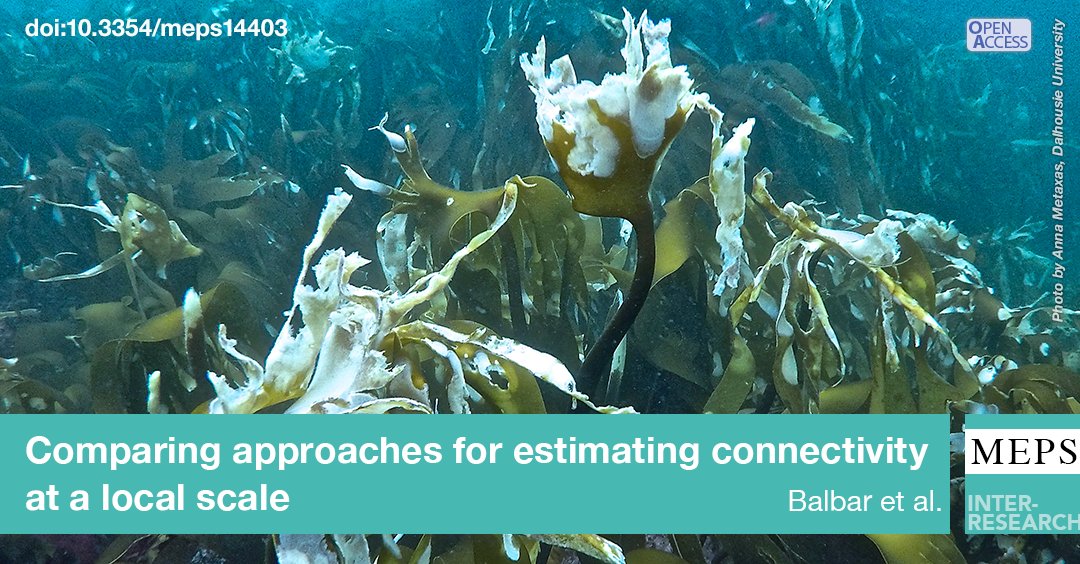
Marine Ecology Progress Series (MEPS)
@MEPS_IR
MEPS has been long established as the leading journal in marine ecology. It is known for its high-quality publication of cutting edge research articles.
ID:747741731836280832
http://meps.int-res.com 28-06-2016 10:41:36
1,9K Tweets
4,1K Followers
751 Following

New paper maps large-scale shifts in the intensity and distribution of #marinebird #speciesdiversity in relation to seasonality and #ElNinoSouthernOscillation phases. Findings could help facilitate dynamic conservation planning
bit.ly/meps_735_141


New insight from Mediterranean waters for defining the nursery role of #polychaete Sabellaria alveolata biogenic formations for juvenile fish
bit.ly/meps_735_103


The #WesternAntarcticPeninsula has a spatial gradient of increased #macroalgae with declining #IceCover . Aaron W. E. Galloway, Ph.D. et al. asked if #FattyAcid trophic biomarkers of seaweeds and consumers differed across this large-scale ice gradient
bit.ly/meps_735_43


Typical sampling effort for coastal benthic studies may not capture macroinfaunal community composition adequately, potentially obscuring hotspots in common #Biodiversity metrics such as #Taxonomic or #FunctionalRichness . #FeatureArticle
bit.ly/meps_735_1


#SupplementalFeeding while migrating could affect the interpretation of #WhaleDiet on feeding grounds
bit.ly/meps_734_157


#StableIsotopeAnalysis suggests low trophic redundancy among commercially targeted temperate #wrasse and supports their classification as #InfluentialSpecies within #MPAs designated for #reefs
bit.ly/meps_734_105


In the Norwegian-Barents Sea system, the spatiotemporal potential for competition at the larval stages of fish explains at least 43, 24, and 73% of cod, haddock, and capelin survival in the later stages. #recruitment #fishsurvival #spatiotemporalmodelling
bit.ly/meps_734_79


Gametophytes of the acutely vulnerable kelp Macrocystis pyrifera exposed to 10.5-23.8°C revealed a fertilization bottleneck (18.8-23.6°C), emphazising urgent conservation for this ecologically vital species. #ClimateChange #KelpConservation #OceanHealth
bit.ly/meps_734_23


Contrary to predictions from global models, satellite chl-a shows #PhytoplanktonBlooms west of the #AntarcticPeninsula are occurring later in the season over time from 1997-2022
bit.ly/meps_734_1



Two major hurricanes, Irma (2017) & Ian (2022), drastically altered #marinehabitats & reduced the density of the #queenconch population in the #FloridaKeys . The sand mobilized by the #storms likely buried conch & caused mortality
bit.ly/meps_733_129


Historical & contemporary trawl survey data reveal long-term declines in the abundance & diversity of a #NorthSea #Inshore #FishAssemblage , likely attributed to a century of trawling, climate change & pollution
bit.ly/meps_733_79
Georgina Hunt


Isolation by distance or environment are the typical models many species follow as their genetic differentiation patterns, however, there may be evidence that #disturbance could also be an influencing factor shaping #GeneticStructure in #CoralPopulations
bit.ly/meps_733_43


To help stakeholders reduce threats to endangered #NorthAtlanticRightWhales , we mapped whale density across U.S. Atlantic waters from 2.9 M km of surveys spanning 18 years and correlated predictions with whale upcalls from 492 hydrophones
bit.ly/meps_732_167


#PartialMigration of an #estuarine -dependent #fish controlled by early growth and environmental drivers. Revealed through #OtolithMicrostructure , chemistry, dynamic time warping (DTW), and machine learning algorithms
bit.ly/meps_732_149



Using stable isotope values & fatty acid compositions, #TrophicNiches of scalloped & smooth #HammerheadSharks were described in the #GulfofCalifornia , highlighting contrasted reliance to pelagic resources and different stages of ontogenetic shifts
bit.ly/meps_732_101


Sensitivity analyses in #LarvalTransport models show the influence of biological factors—PLD, spawning period, & mortality—on #NorthSeaSole . Calibration on key parameters enhances models, offer deeper insights into recruitment variability & connectivity
bit.ly/meps_731_67


Estimating #EcologicalConnectivity with directional ocean currents shows strong agreement with #DispersalModelling for an invasive bryozoan and green sea urchin larvae, while average current speed is an adequate indicator of dispersal for kelp spores. #MFC
bit.ly/meps_731_51


#PopulationConnectivity can be hard to assess for species with high gene flow. We show that population- and kinship-based approaches can help detect #GeneticDifferentiation in the shanny Lipophrys pholis along the Northeast Atlantic coast. #MFC
bit.ly/meps_731_9


